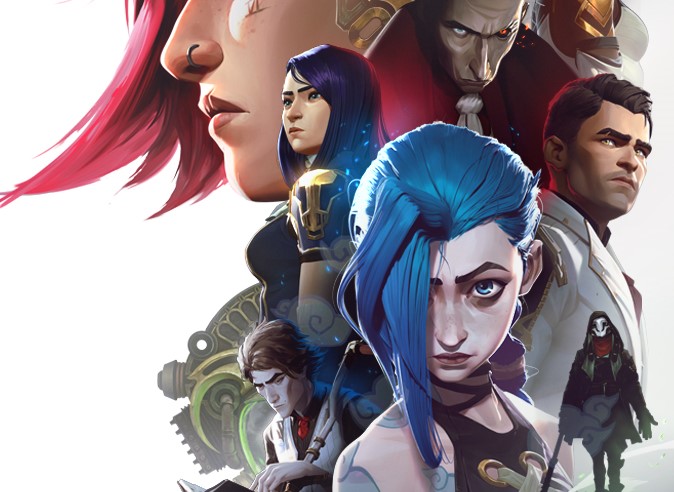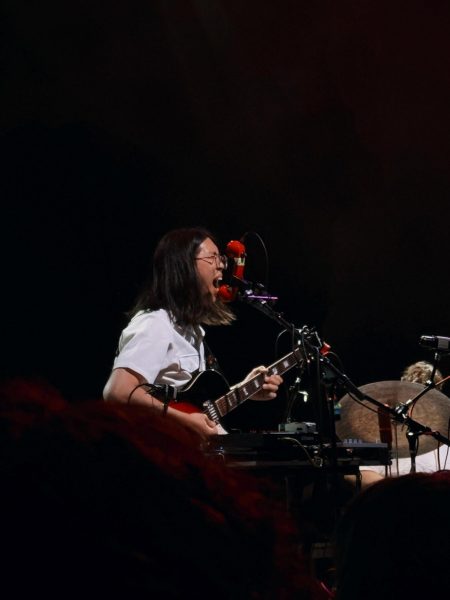“Arcane” Review
Arcane, a new animated Netflix series, has a large world filled with exciting characters you either love to root for or despise, a simple yet, layered tale and extremely stunning and pioneering animation with a distinct visual style. Though the “video game adaptation curse” was already beginning to crack, this League of Legends adaptation puts the final nail in the coffin by breaking preconceived notions of what the animation medium is capable of, delivering a once-in-a-generation masterpiece that will inspire both fans and writers alike for years to come. It does all of this while telling a gripping, action-packed story, whether you’re familiar with Runeterra or just seeking for the next event series.
Arcane is set in the city of Piltover and its undercity district of Zaun, and is based on the lore of League of Legends, serving as a prequel to many of the characters and plot aspects from the games. Arcane is mostly an upstairs-downstairs plot, focusing on the escalating tensions and social unrest in Zaun, where people live in deplorable conditions and are constantly threatened by Piltover’s vicious enforcers.
By concentrating on visual storytelling and employing easter eggs to hint at a larger world, Arcane does a superb job of establishing its huge world full of rich history and heritage without blasting us with exposition. The mechanical construction of Zaun, the way a tavern changes appearance from one arc to the next, and the monuments referencing deities or former fighters all contribute to telling that greater story without the need for many verbal explanations, much like the original Star Wars did.
The tale revolves around two parallel storylines that take place in two different locales. In Piltover, we follow Jayce and Viktor, two scientists on the cusp of being able to use technology to harness magic, as well as the societal costs of rapid technological advancement. We follow orphan sisters Vi and Powder through the streets of Zaun as they become entangled in a failed heist and the beginnings of a gang war in Zaun with major ramifications for both towns. Despite having a lot of moving components and a lot of narrative ideas and worldbuilding, Arcane manages to keep its two tales grounded. Sure, the show delves into significant events that have far-reaching consequences for the realm of Runeterra. Even if you’ve never played the games (I’ll admit, I’ve never played any of the Runeterra-set games), the character stories are what keep you interested episode after episode; the background is just frosting on the cake for deepening everything within the greater tale.
However, well-written characters are just part of the story; Arcane also has a great voice cast, with Katie Leung’s soft-spoken Caitlyn and Shohreh Aghdashloo’s remorseful Grayson bringing a depth of emotion to the characters. Jinx’s bouts of wrath are especially well-balanced by Ella Purnell’s fragility, which inspires both terror and sympathy anytime she’s on screen. Throughout all nine episodes, Hailee Steinfeld steals the show with her phenomenal representation of Vi’s whole path, bringing a world full of anguish and emotional baggage coated in a thick shell of toughness. Without a doubt, as spectacular as the action sequences are, Arcane is frequently tragic, particularly if you’ve played the games and know what happens to key characters.Even if you don’t know who the characters are, the show is full of shocks and narrative twists that add to the character journeys. There is a definite goal to make this the initial step towards a much broader world, one that aspires to compete with the Marvel Cinematic Universe in terms of ambitious connected narrative (albeit with a more visually inventive approach). Even as a stand-alone season, Arcane comes to a satisfying though heartbreaking conclusion.










